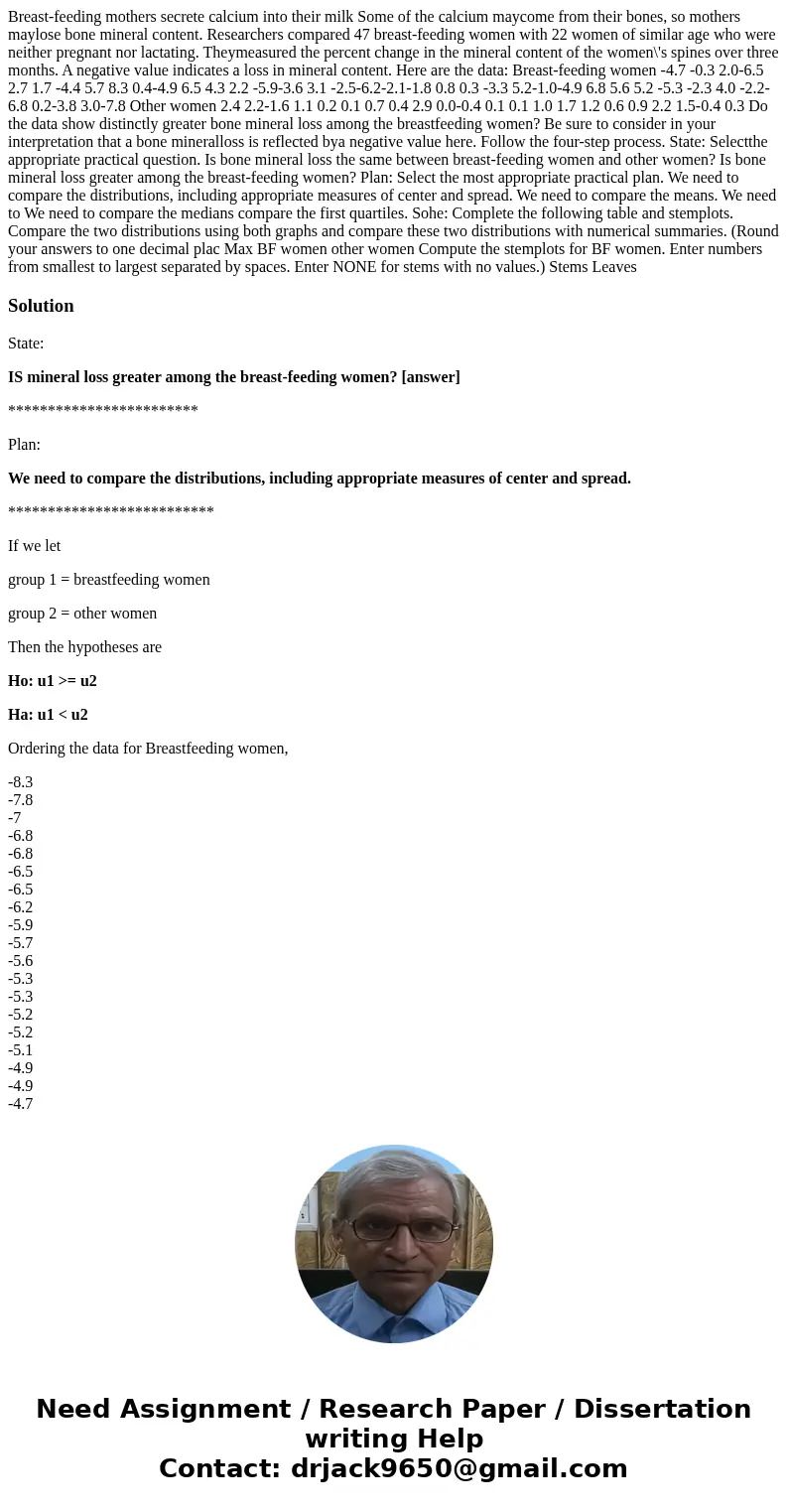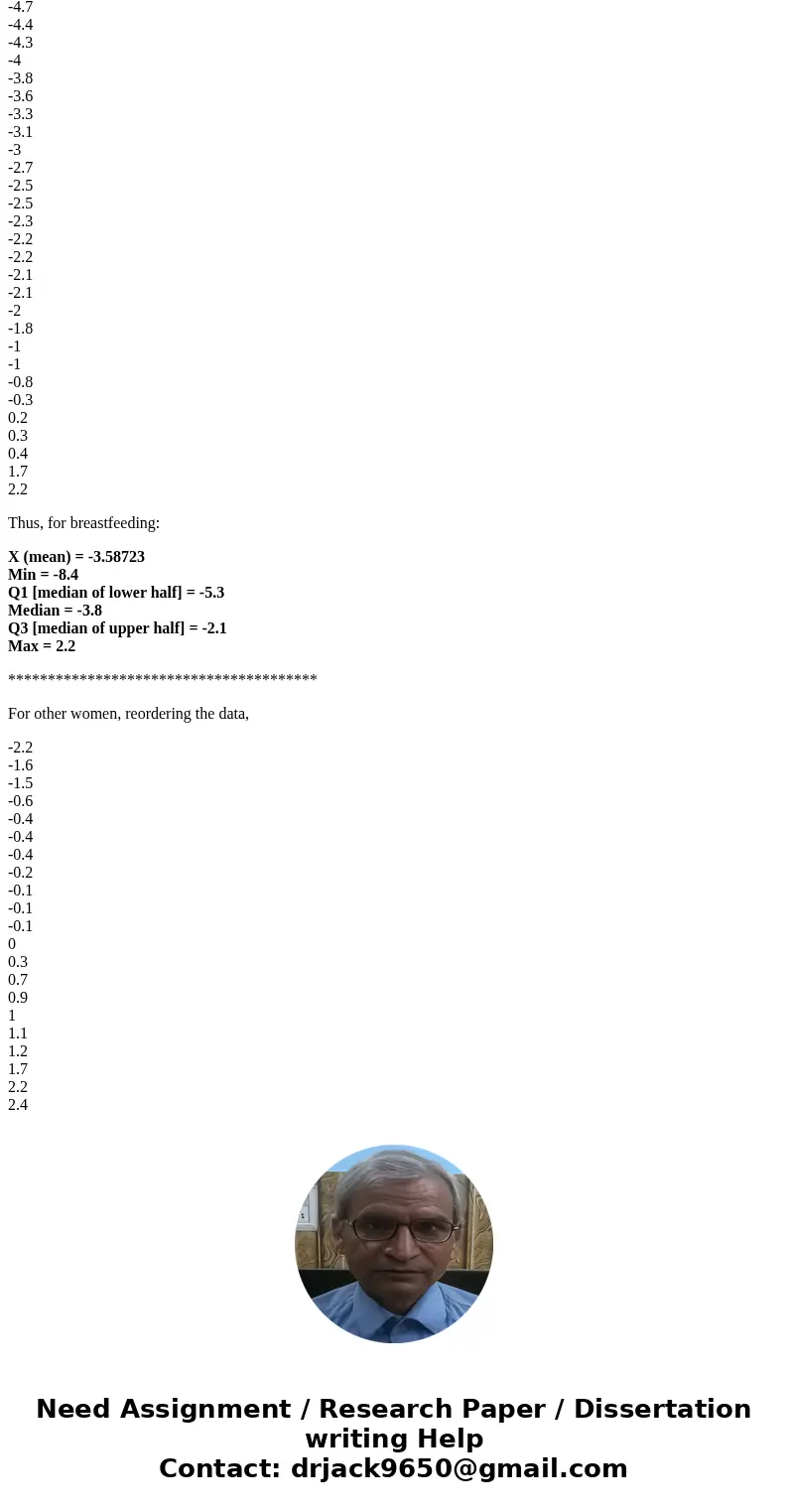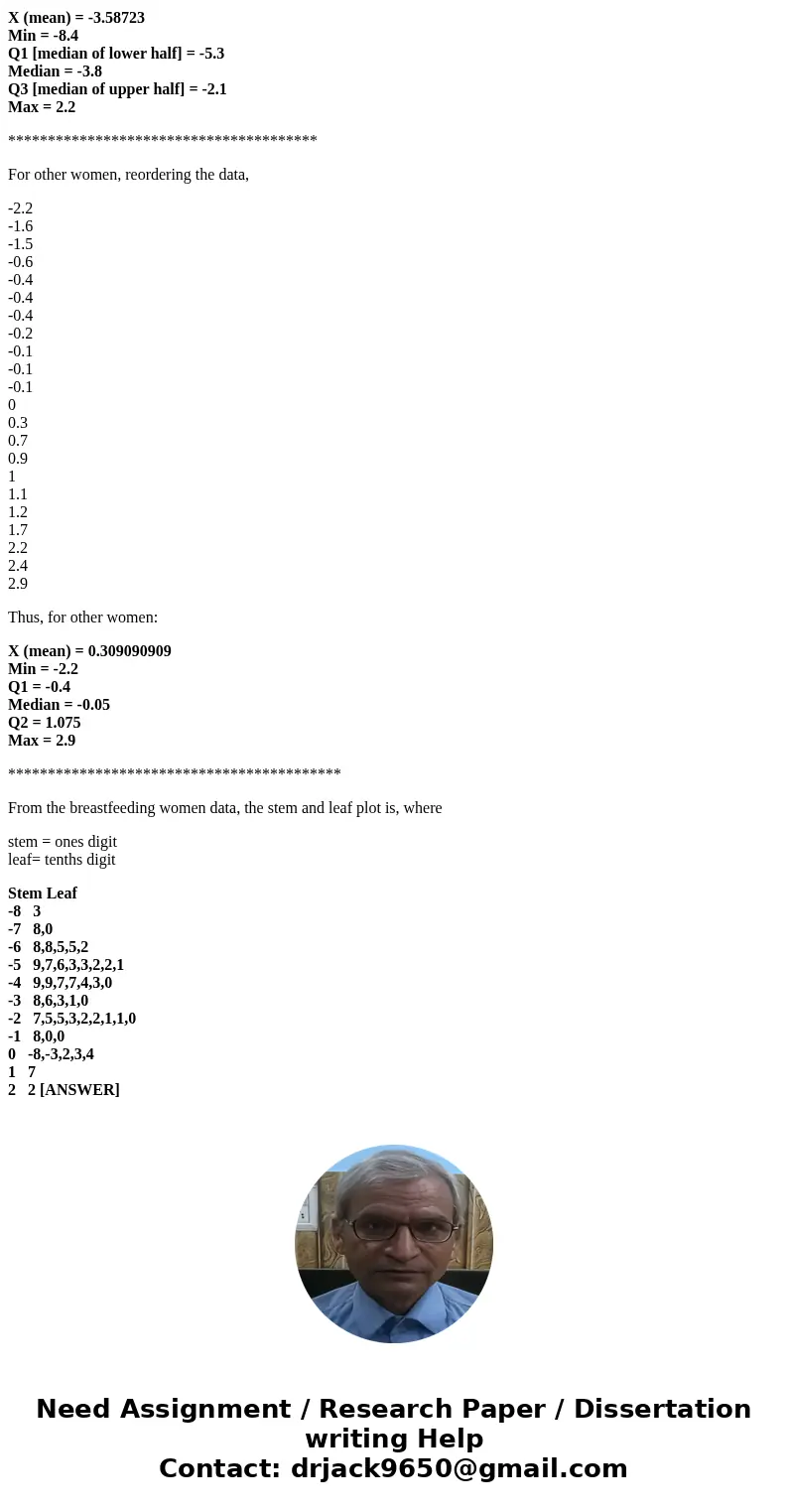Breast-feeding mothers secrete calcium into their milk Some of the calcium maycome from their bones, so mothers maylose bone mineral content. Researchers compared 47 breast-feeding women with 22 women of similar age who were neither pregnant nor lactating. Theymeasured the percent change in the mineral content of the women\'s spines over three months. A negative value indicates a loss in mineral content. Here are the data: Breast-feeding women -4.7 -0.3 2.0-6.5 2.7 1.7 -4.4 5.7 8.3 0.4-4.9 6.5 4.3 2.2 -5.9-3.6 3.1 -2.5-6.2-2.1-1.8 0.8 0.3 -3.3 5.2-1.0-4.9 6.8 5.6 5.2 -5.3 -2.3 4.0 -2.2- 6.8 0.2-3.8 3.0-7.8 Other women 2.4 2.2-1.6 1.1 0.2 0.1 0.7 0.4 2.9 0.0-0.4 0.1 0.1 1.0 1.7 1.2 0.6 0.9 2.2 1.5-0.4 0.3 Do the data show distinctly greater bone mineral loss among the breastfeeding women? Be sure to consider in your interpretation that a bone mineralloss is reflected bya negative value here. Follow the four-step process. State: Selectthe appropriate practical question. Is bone mineral loss the same between breast-feeding women and other women? Is bone mineral loss greater among the breast-feeding women? Plan: Select the most appropriate practical plan. We need to compare the distributions, including appropriate measures of center and spread. We need to compare the means. We need to We need to compare the medians compare the first quartiles. Sohe: Complete the following table and stemplots. Compare the two distributions using both graphs and compare these two distributions with numerical summaries. (Round your answers to one decimal plac Max BF women other women Compute the stemplots for BF women. Enter numbers from smallest to largest separated by spaces. Enter NONE for stems with no values.) Stems Leaves
State:
IS mineral loss greater among the breast-feeding women? [answer]
************************
Plan:
We need to compare the distributions, including appropriate measures of center and spread.
**************************
If we let
group 1 = breastfeeding women
group 2 = other women
Then the hypotheses are
Ho: u1 >= u2
Ha: u1 < u2
Ordering the data for Breastfeeding women,
-8.3
-7.8
-7
-6.8
-6.8
-6.5
-6.5
-6.2
-5.9
-5.7
-5.6
-5.3
-5.3
-5.2
-5.2
-5.1
-4.9
-4.9
-4.7
-4.7
-4.4
-4.3
-4
-3.8
-3.6
-3.3
-3.1
-3
-2.7
-2.5
-2.5
-2.3
-2.2
-2.2
-2.1
-2.1
-2
-1.8
-1
-1
-0.8
-0.3
0.2
0.3
0.4
1.7
2.2
Thus, for breastfeeding:
X (mean) = -3.58723
Min = -8.4
Q1 [median of lower half] = -5.3
Median = -3.8
Q3 [median of upper half] = -2.1
Max = 2.2
***************************************
For other women, reordering the data,
-2.2
-1.6
-1.5
-0.6
-0.4
-0.4
-0.4
-0.2
-0.1
-0.1
-0.1
0
0.3
0.7
0.9
1
1.1
1.2
1.7
2.2
2.4
2.9
Thus, for other women:
X (mean) = 0.309090909
Min = -2.2
Q1 = -0.4
Median = -0.05
Q2 = 1.075
Max = 2.9
******************************************
From the breastfeeding women data, the stem and leaf plot is, where
stem = ones digit
leaf= tenths digit
Stem Leaf
-8 3
-7 8,0
-6 8,8,5,5,2
-5 9,7,6,3,3,2,2,1
-4 9,9,7,7,4,3,0
-3 8,6,3,1,0
-2 7,5,5,3,2,2,1,1,0
-1 8,0,0
0 -8,-3,2,3,4
1 7
2 2 [ANSWER]



 Homework Sourse
Homework Sourse